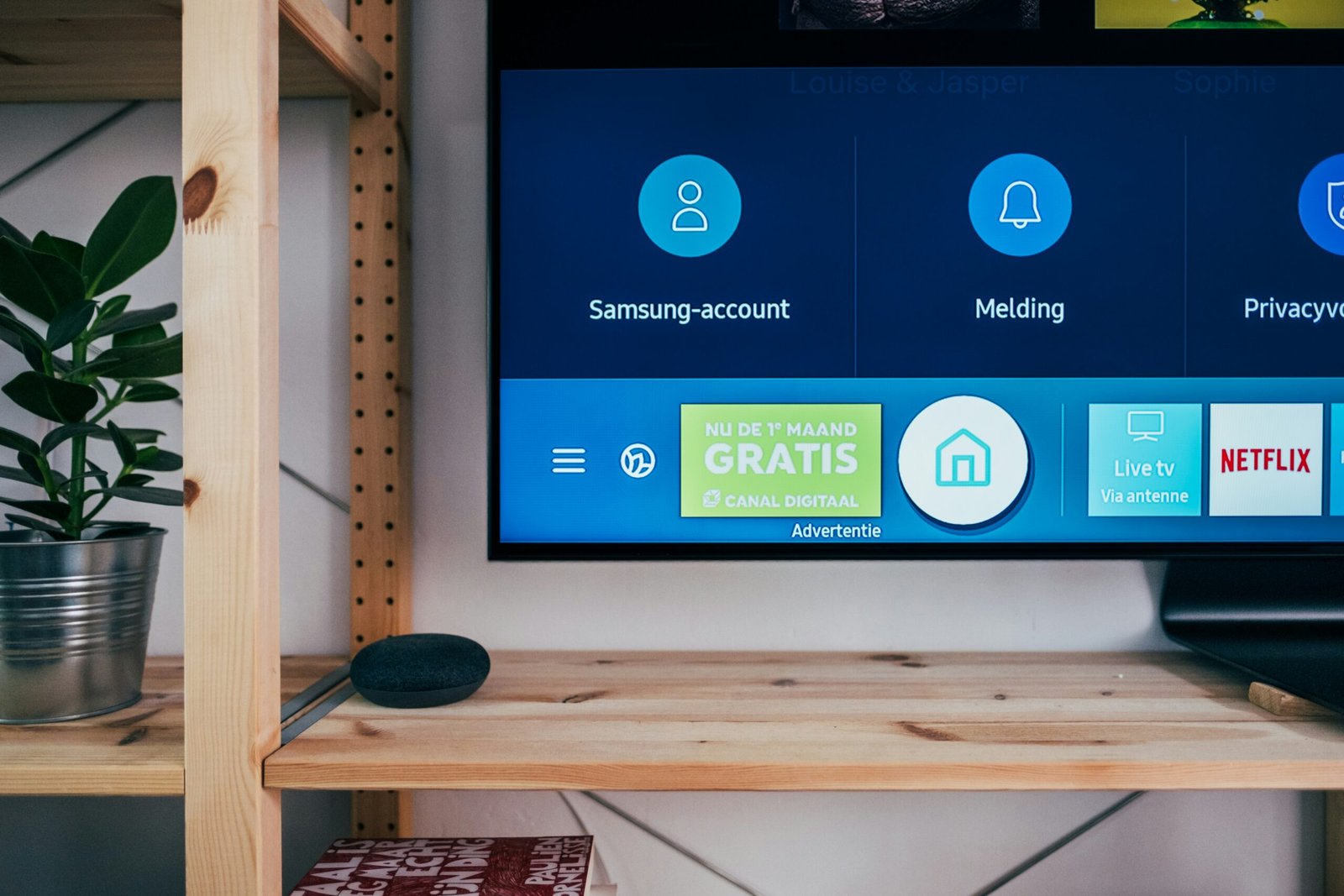Apple’s Self Service Repair Tools: Are They Worth the Cost?
Introduction to Apple’s Self Service Repair Program
Apple’s Self Service Repair program, launched in April 2022, represents a significant shift in the company’s approach to device maintenance and repair. This initiative allows consumers to access genuine Apple parts, tools, and manuals to repair their own devices. Currently, the program supports various models of the iPhone 12, iPhone 13, and select Macs that are equipped with M1 chips. The inclusion of more devices is anticipated as the initiative progresses.
The introduction of the Self Service Repair program comes in response to mounting consumer demand and pressure from right-to-repair advocacy groups. Over recent years, there has been an increasing push for manufacturers to provide more accessible repair solutions for their products, driven by the broader right-to-repair movement. This movement champions the idea that consumers should have the freedom and ability to repair their own devices without needing to rely exclusively on manufacturers’ proprietary services.
Apple’s decision to launch this program is also contextualized by legislative trends across various regions. In the United States and the European Union, discussions and implementations of right-to-repair laws have gained momentum. These laws designate manufacturers to provide access to necessary components, tools, and information required for independently conducted repairs. Apple’s program, therefore, can be seen as both a response to consumer expectations and a proactive measure in anticipation of regulatory changes.
By facilitating self-service repairs, Apple aims to empower users, providing them with greater autonomy over their personal devices. This can lead to cost savings for consumers, reduced electronic waste, and enhanced device longevity. The program also potentially alleviates the burden on authorized service providers, allowing them to focus on more complex repairs. However, the question remains: Are these self-service repair tools worth the investment? This blog will explore various facets of this initiative to help determine its overall value for consumers.
“`
What’s Included in the Repair Tools Kit?
The Apple Self Service Repair Tools Kit represents a significant step towards empowering consumers with the ability to maintain and repair their own devices. Central to this initiative is the comprehensive nature of the kit, ensuring it addresses a variety of repair needs dictated by specific devices. The components of this newly launched tool kit are meticulously curated to offer a seamless repair experience.
Each Self Service Repair Tools Kit includes a range of specialized tools tailored to Apple’s distinct product lineup. Among these tools are precision screwdrivers designed to accommodate various proprietary screws found in Apple devices, prying tools for delicate part removals, and suction cups for screen replacements. The inclusion of anti-static mats further attests to Apple’s commitment to safe repair practices, protecting sensitive electronics from static damage. Alongside hardware tools, comprehensive repair manuals are provided, offering step-by-step guidance to users. These manuals break down complex repair processes into manageable steps, effectively democratizing access to in-depth, user-friendly technical knowledge.
Replacement parts within the kit are another critical aspect. Apple ensures high-quality, genuine parts are available, covering a broad spectrum of commonly required components such as batteries, screens, and cameras. These parts are specifically matched to device models, ensuring compatibility and reducing instances of repair failure. Although the focus is on major components, Apple has also made smaller, often overlooked parts like screws and adhesive strips available, symbolizing a holistic approach to device maintenance.
However, the comprehensiveness of the kit has its limits. It primarily focuses on routine repairs and maintenance, which means it may not cover every conceivable issue. Complex repairs requiring highly specialized tools or software diagnostics might still necessitate professional intervention. Despite these limitations, the Self Service Repair Tools Kit marks a significant step towards user empowerment, offering a robust solution for many common repair needs.
Cost Analysis: Tools, Parts, and Time
When considering whether to undertake repairs through Apple’s Self Service Repair program, it is crucial to analyze the associated costs comprehensively. The initial investment includes the purchase of a tool kit designed specifically for repairs, individual parts necessary for replacements, and supplementary costs such as shipping and taxes. Apple’s Self Service Repair program offers an extensive array of tools that come at a premium price. Typically, a basic toolkit can cost anywhere between $49 to $200, depending on the specificity and complexity of the tools required.
The cost of individual replacement parts also varies significantly. For example, a replacement battery for an iPhone might cost around $69, while replacement screens range from $100 to $300, depending on the model and generation of the device. Furthermore, users may incur additional charges for shipping and taxes, which could add another 10% to 15% to the total cost.
Comparing these expenses to professional repair services reveals a nuanced picture. Professional repairs from Apple or authorized service providers usually command a higher initial outlay, often surpassing $200 for battery replacements and $300 or more for screen repairs. However, professional services come bundled with warranties, quality assurance, and the convenience of not investing personal time in the repair process.
Time is another crucial factor in the cost analysis. Repairs executed via Apple’s Self Service Repair might save money upfront but can be time-consuming, especially for individuals unfamiliar with the procedure. The time spent researching, understanding, and executing the repair may offset the monetary savings. Conversely, choosing professional repair services translates to minimal time investment on the part of the user.
In essence, while Apple’s Self Service Repair program provides a potential avenue for reducing repair costs, it requires careful consideration of both the financial and time investments. For tech-savvy individuals with the necessary time and patience, self-service repairs can indeed represent a cost-saving alternative to professional services. However, for those prioritizing convenience and assurance, professional repairs might still be the preferable option.
Ease of Use: Are the Tools User-Friendly?
Apple’s introduction of self-service repair tools aims to empower users with the capability to conduct their own repairs. These tools are designed to ensure that even those without professional repair training can manage common repairs efficiently. To assess the usability of these tools, it is essential to evaluate two primary aspects: the comprehensiveness of the provided manuals and guides, and the practicality of the tools themselves.
The manuals that accompany Apple’s self-service repair kits are notably detailed. They offer step-by-step instructions with clear illustrations, ensuring that users can follow along without confusion. Attention to detail in these guides plays a crucial role in demystifying the repair process for individuals who might otherwise find it daunting. The inclusion of troubleshooting tips and safety warnings further enhances the usability of these resources.
Beyond the documentation, the tools provided in the kit are crafted with user experience in mind. Apple’s tool assortment is engineered to match professional standards while remaining user-friendly. Tools such as screwdrivers, adhesive strips, and specialty components are ergonomically designed to maximize ease of use, minimizing the risk of mishandling or damage. The precision and quality of these tools instill confidence, even for novices attempting repairs for the first time.
User testimonials indicate a mixed but generally positive reception regarding the ease of use. Many users have expressed satisfaction with the clarity of the instructions and the quality of the tools, citing successful DIY repairs as proof. However, some users have reported challenges, primarily linked to the complexity of specific repairs or unfamiliarity with technical tasks. Nonetheless, the overall feedback suggests that with a bit of patience and attentiveness, the self-service repair tools and guides are highly accessible to the average user.
In summary, while there is a learning curve involved, Apple’s self-service repair tools are designed to be user-friendly. The detailed manuals and high-quality tools significantly enhance the likelihood of successful repairs, making this offering a viable option for consumers looking to take their device maintenance into their own hands.
Quality of Repairs: Can Consumers Achieve Professional Results?
When it comes to repairing Apple devices, the question of whether consumers can achieve professional results with Apple’s self-service repair tools is crucial. Apple has designed these tools to be user-friendly, but the quality of the repairs ultimately hinges on the skills and diligence of the individual performing the task. Professional technicians at Apple stores are trained rigorously and have extensive experience handling intricate electronics. This advantage allows them to guarantee a higher level of quality and reliability in their repairs.
One significant aspect to consider is the durability of self-service repairs compared to those completed by Apple-certified professionals. Professional repairs often involve comprehensive diagnostics and precise calibration that may be challenging for an average consumer to replicate. The margin for error is much smaller in a professional setting, ensuring that the repaired device functions optimally and remains durable over time.
Apple’s self-service repair initiative does provide consumers with access to genuine parts, which is a vital component to achieving a high-quality repair. However, the effectiveness of these repairs is contingent on the end-user’s ability to follow instructions meticulously and use the provided tools correctly. Any deviation from the prescribed process can lead to subpar outcomes, potentially compromising the device’s overall reliability.
The warranty implications are another critical factor to consider. Repairs performed by Apple-certified professionals typically come with detailed warranties, giving consumers peace of mind regarding the longevity and performance of the repair work. Conversely, when consumers opt to repair their devices using the self-service tools, the warranty coverage may be limited or voided. Apple does offer limited warranties on the parts provided through the self-service program, but these do not extend to any damage incurred during the repair process or errors made by the user.
In conclusion, while Apple’s self-service repair tools provide an opportunity for tech-savvy consumers to attempt high-quality repairs, matching the precision and reliability of Apple-certified professionals is challenging. The potential for minor errors and the risk to warranty coverage are crucial considerations that may influence one’s decision to undertake self-service repairs.
“`html
Risk Factors and Potential Drawbacks
While Apple’s self-service repair tools offer an intriguing proposition for the tech-savvy, they do come with significant risks and potential drawbacks that consumers must weigh carefully. One primary concern is the potential to void warranties. Apple’s warranty policies are strict, and using unauthorized repair tools or techniques can easily render a warranty null and void. This is a crucial consideration for anyone whose device is still under warranty, as it could mean bearing the full cost of future repairs.
Aside from warranty concerns, there’s a significant risk of damaging the device. DIY repairs require a level of precision and expertise that most average consumers may lack. Even minor errors, such as incorrectly seating a component or using an inappropriate tool, can lead to severe damage. For instance, improperly reassembling an iPhone can damage its delicate connectors or even its motherboard, ultimately leading to higher repair costs than originally anticipated.
Moreover, handling electronic repairs involves certain safety hazards. Lithium-ion batteries, commonly used in Apple devices, can be particularly dangerous if punctured or damaged during the repair process. There’s also the risk of electrical shocks, especially when dealing with exposed circuitry. Potentially harming oneself for the sake of saving some repair costs is a significant drawback that should not be overlooked.
These inherent risks raise a critical question: do the benefits of self-service repair outweigh these potential challenges for the average consumer? While the allure of saving money and the convenience of not visiting a service center are appealing, the average consumer must consider their own technical proficiency and weigh it against these substantial risks. For most, the potential for voided warranties, device damage, and safety hazards can make professional service a more prudent choice.
“`
Comparative Analysis with Third-Party Repair Options
When evaluating Apple’s self-service repair program against third-party repair services and kits, several factors come into play, including cost, quality of materials, ease of use, and overall convenience. One of the primary selling points of Apple’s program is the promise of authenticity and compatibility, as the tools and parts provided are guaranteed to be genuine. This assurance often translates into higher quality repairs with less risk of further damage or malfunction.
However, this comes at a premium cost. Third-party repair kits and services are typically less expensive. These alternatives often use non-OEM parts, which can significantly reduce the repair bill but also raise questions about durability and compatibility. While some third-party vendors maintain good reputations for high-quality components, the variability in standards can lead to inconsistent results. Therefore, the potential for a successful repair is somewhat of a gamble when opting for non-Apple parts.
Ease of use is another critical factor. Apple’s self-service repair tools are designed to integrate seamlessly with their devices, offering detailed guides to assist even those with minimal technical skills. Third-party kits range significantly in quality and user-friendliness; some provide comprehensive instructions and all necessary tools, while others might assume a baseline level of expertise, which can be a barrier for the less tech-savvy user.
In terms of convenience, Apple’s official program allows users to procure everything they need in one place, simplifying the repair process. On the contrary, third-party options might necessitate purchasing parts from various suppliers, which can be time-consuming and may result in mismatched or incompatible components. Customer satisfaction varies as well: Apple’s program, while more expensive, tends to receive high marks for reliability and performance, whereas third-party services can be hit-or-miss due to the variability in part quality and service outcomes.
Conclusion: Is Apple’s Self Service Repair Program Worth It?
The Apple Self Service Repair program offers an innovative approach, allowing users to take matters into their own hands when it comes to repairing their devices. From the detailed examination of various sections, it is clear that this initiative has its distinct advantages and certain drawbacks.
For the tech-savvy individuals, the program presents a valuable opportunity. These users are likely to be comfortable navigating the complexities of device repair and the tools provided could be seen as an empowering step towards maintaining their gadgets independently. The decrease in downtime and potential cost savings make the program appealing to this group.
On the other hand, those who prefer professional assistance may view the program differently. Despite the availability of comprehensive guides and official tools, the risk of errors and the complexity of some repairs can be daunting. For these users, entrusting their devices to Apple-certified professionals remains a more reassuring option, ensuring repairs are conducted with the highest standards of precision.
One must also consider the financial aspect. While the upfront cost of purchasing repair tools and parts might initially seem high, it can be justified over multiple repairs. However, those who foresee only occasional repairs might find the investment less justifiable compared to professional repair services.
Moreover, Apple’s commitment to reducing electronic waste through this program reflects a significant stride towards sustainability. By enabling self-service repairs, the company empowers consumers to extend the lifespan of their devices, thus contributing positively to environmental conservation efforts.
In essence, whether Apple’s Self Service Repair program is worth it largely depends on the individual consumer’s technical skill level, confidence in conducting repairs, and specific circumstances. For some, the program offers unparalleled convenience and potential cost-efficiency. For others, especially those less inclined towards technical tasks, traditional repair services may still be the preferred route. Ultimately, the decision hinges on whether the empowerment of self-repair aligns with one’s personal comfort and needs.







